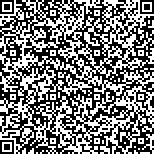下载中心
优秀审稿专家
优秀论文
相关链接
摘要

对于宽波段传感器,不一定能直接由普朗克定律或者斯蒂芬玻尔兹曼定律建立温度与辐射亮度的关系。在知道传感器通道响应函数和像元组分比辐射率波段变化的情况下,只要恰当地拟合出黑体温度和其宽波段热辐射的对应经验关系式,并计算一个通道响应函数加权平均的比辐射率,则从混合像元的宽波段多角度热红外观测仍可较准确地反演组分温度。以AMTIS为例,文中给出了两种拟合宽波段传感器亮度温度和辐射亮度之间关系的方式:一种是从斯蒂芬玻尔兹曼定律的形式出发的;另一种则是用普朗克定律,选择一个合适的波长,使得AMTIS传感器随温度变化的热辐射曲线和普朗克函数在某个波长处的热辐射曲线两者之间尽可能地平行。文中以两个例子说明了这两种方式在宽波段传感器组分温度反演中的应用和误差,分析了比辐射率波段变化对组分温度反演的影响。
It is not always suitable to use Planck’s law or Stefan-Boltzmann’s law to describe the relation between\nbrightness temperature and radiance for awide band sensor.But given a Planck’s lawweighted and band averaged emis-\nsivity and an empirical fit equation between brightness temperature and radiance,it is still very feasible to retrieve compo-\nnent temperatures frommulit-angle data.In this paper,different equations to fit brightenss temperature and radiance for\nAMTIS(Airborne Multi-angle TIR/NIR Imaging System)are analyzed:the first approach is to use the stefan-Boltzmann’s\nlaw,and a compact equation including aT4term is found to be very effective ;the second approach is to fit an appropriate\nwavelength using planck’s lawThe componnet temperature retrievel errors due to the band average of emissivity is also\nanalyzed.

